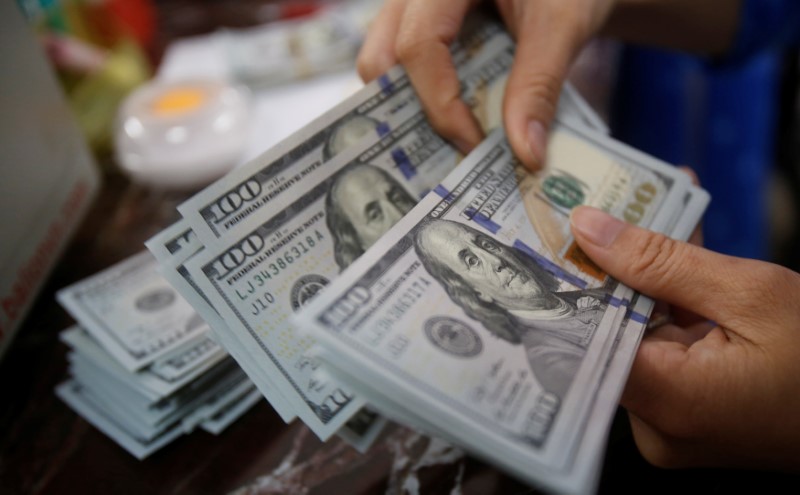Dollar Edges Lower; Likely Intervention, Possible Fed Pivot Weigh
2022.10.26 03:28
[ad_1]

© Reuters.
By Peter Nurse
Investing.com – The U.S. dollar edged lower in early European trading Wednesday, trading near a three-week low, as traders reacted to more U.S. economic weakness as well as likely intervention in Asia.
At 02:55 ET (06:55 GMT), , which tracks the greenback against a basket of six other currencies, fell 0.2% to 110.638, just above the session’s low of 110.612, the weakest since Oct. 5.
The most recent economic U.S. data, released Tuesday, showed that U.S. sank in August as surging mortgage rates sapped demand.
Following on from Monday’s indicating that U.S. business activity contracted for a fourth straight month, the signs are building that the aggressive rate hikes by the Federal Reserve are already having a damaging impact on the world’s biggest economy.
The is widely expected to authorize another 75 basis point increase next Wednesday, but the view is growing that any further hikes will be of a smaller magnitude.
The , by contrast, is expected on Friday to keep its loose policy settings unchanged, a stance which has hit the yen hard.
traded largely unchanged at 147.94, after a move through 150 resulted in suspected intervention by the BoJ on Friday and Monday.
“However, neither of the above factors may keep the dollar in check for long,” said analysts at ING, in a note. “On the former, the BoJ meets to set monetary policy this Friday and unless we see a shift in its ultra-dovish outlook (a negative policy rate and ongoing quantitative easing) it seems hard to expect a top in USD/JPY anytime soon. Equally on the Fed side, this week’s U.S. data calendar should maintain a hawkish Fed.”
That said, it looks like the Chinese authorities have also joined the intervention club, as fell 0.5% to 7.2690, with Reuters reporting that a number of Chinese state-owned banks sold U.S. dollars in late trade on Tuesday to prop up the weakening yuan.
Concerns over China’s political climate saw the yuan fall sharply this week, with Beijing reiterating its commitment to maintaining its strict zero-COVID policy, while the country’s third-quarter GDP data underwhelmed.
Elsewhere, rose 0.2% to 1.1486, continuing to benefit from the appointment of Rishi Sunak as Britain’s next leader, replacing Liz Truss, given his perceived fiscal prudence.
“After the failed experiment with Trussonomics, the challenge facing the new team will be harder than the one that existed earlier this summer and probably a reason why international investors will not want to chase GBP/USD above the 1.15 level,” ING added.
rose 0.2% to 0.9979, near a six-week high, helped by rising to 82 in October, climbing above the previous month’s 79 reading.
The decides policy on Thursday and is widely expected to raise rates by 75 basis points.
rose 0.6% to 0.6432, at its strongest since Oct. 7 after hot figures earlier in the week increased pressure on the to retain an aggressive monetary stance at its meeting next week, and rose 0.4% to 0.5775.
[ad_2]
Source link








